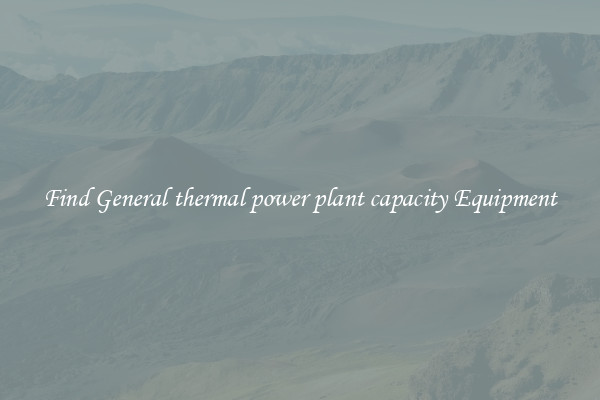Find General thermal power plant capacity Equipment
When it comes to thermal power plants, capacity is of utmost importance. A higher capacity ensures that the power plant can generate a large amount of electricity to meet the growing energy demands of a country or region. To achieve this, finding general thermal power plant equipment with a capacity of not less than 300 megawatts (MW) is crucial.

Thermal power plants rely on the combustion of fossil fuels such as coal, oil, or natural gas to produce steam, which drives turbines connected to generators. These generators then convert mechanical energy into electrical energy. The capacity of a thermal power plant refers to the maximum amount of power it can generate under normal conditions.
When seeking thermal power plant equipment with a capacity not less than 300 MW, several key factors should be considered. Firstly, the type of fuel used is important. Different fuels have different calorific values and combustion efficiencies, which directly impact the capacity of the power plant. Typically, coal-fired power plants have higher capacities compared to oil or gas-fired ones due to the higher energy content of coal.
Another crucial aspect is the technology used in the power plant. Advancements in technology have led to the development of more efficient and higher capacity equipment. For instance, the introduction of ultra-supercritical boilers and turbines has significantly increased the capacity of coal-fired power plants. These technologies operate at higher steam temperatures and pressures, resulting in improved efficiency and higher power generation capacity.
Furthermore, the size and configuration of the power plant play a vital role in determining its capacity. Larger power plants typically have higher capacities as they can accommodate more equipment and generate higher amounts of steam. This includes having multiple boiler units, turbines, and generators, as well as adequate space for fuel storage, handling, and ash disposal.
In addition to the capacity of the equipment, considerations such as reliability, efficiency, and environmental impact are also essential. Investing in reliable equipment ensures consistent power generation and reduces downtime. Higher efficiency means that the power plant can generate more electricity from the same amount of fuel, resulting in cost savings and reduced environmental impacts. It is crucial to select equipment that meets stringent emission standards to minimize air pollution and contribute to a cleaner environment.
In conclusion, finding general thermal power plant equipment with a capacity not less than 300 MW is crucial to meet the growing energy demands of a country or region. Factors such as the type of fuel, technology, size, and configuration play significant roles in determining the capacity of the power plant. Investing in reliable, efficient, and environmentally friendly equipment ensures continuous power generation and sustainability in the long run.

View details

View details

View details

View details







